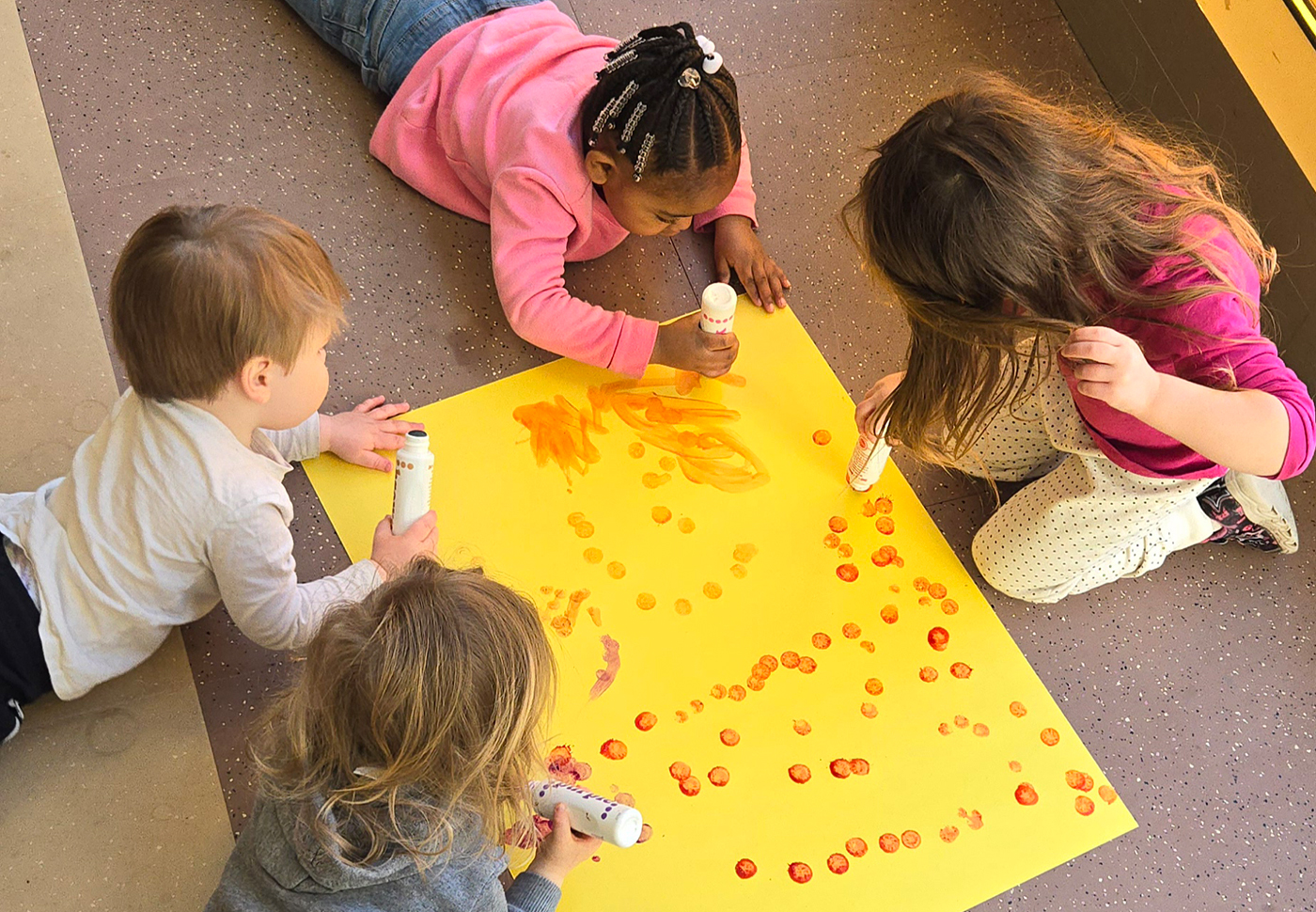
During consistent free play and focused projects regarding kindness, teachers noticed that the children were rapidly developing big emotions of their own, as well as other early signs of empathy in the classroom.
Often, when one infant would cry, a nearby friend would show concern through crying themselves or checking on the infant using gentle touches. Teachers began to structure curriculum around this emergent idea of empathy. Classroom observations, small group, and free play soared with spontaneous opportunities about the importance of understanding through effective communication. With this growing aptitude for labeling emotions, the children have been more equipped to recognize how they are feeling, and how their choices may affect others.
Teachers first initiated talk of empathy during circle time, which is in the morning after breakfast. Teachers invited the children over through singing songs. Based on classroom interests, books were shuffled periodically to maintain engagement. Teachers were able to incorporate Read It Again! activities with books like “Oh So Kind!” by Joy Cho, “Tyrannosaurus Wrecks” by Sudipta Bardhan-Quallen, and “Hands Are Not for Hitting” by Martine Agassi. A seed was planted through these read-along picture books, and the children began to take note of the varying behavioral dynamics on display.
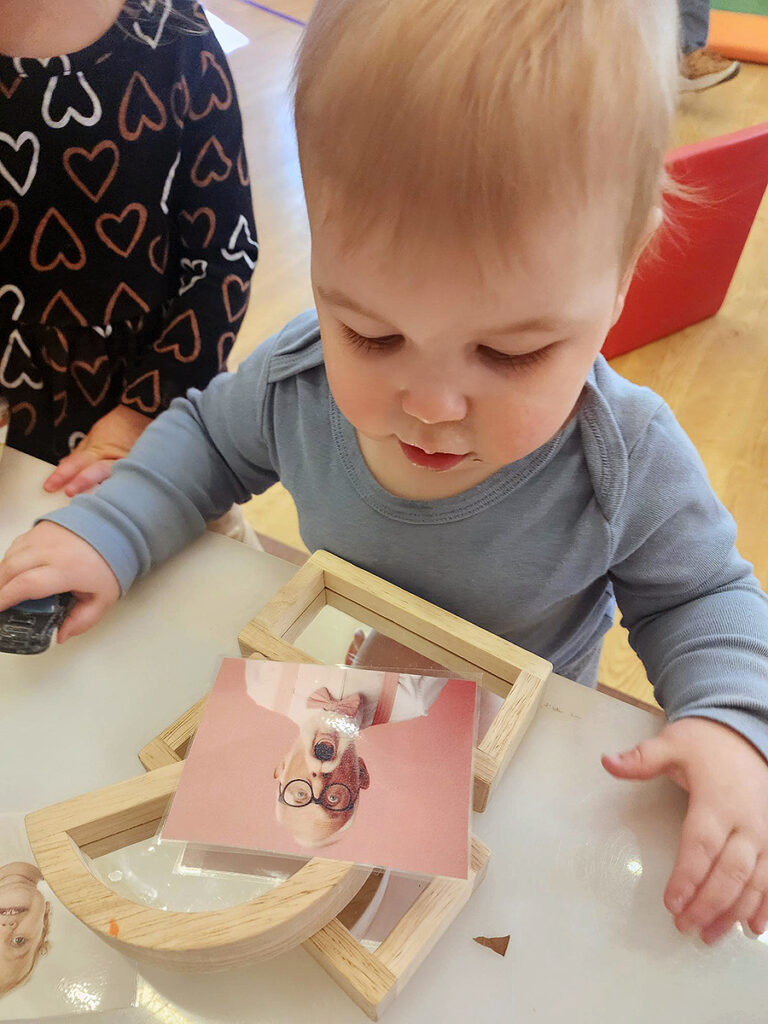
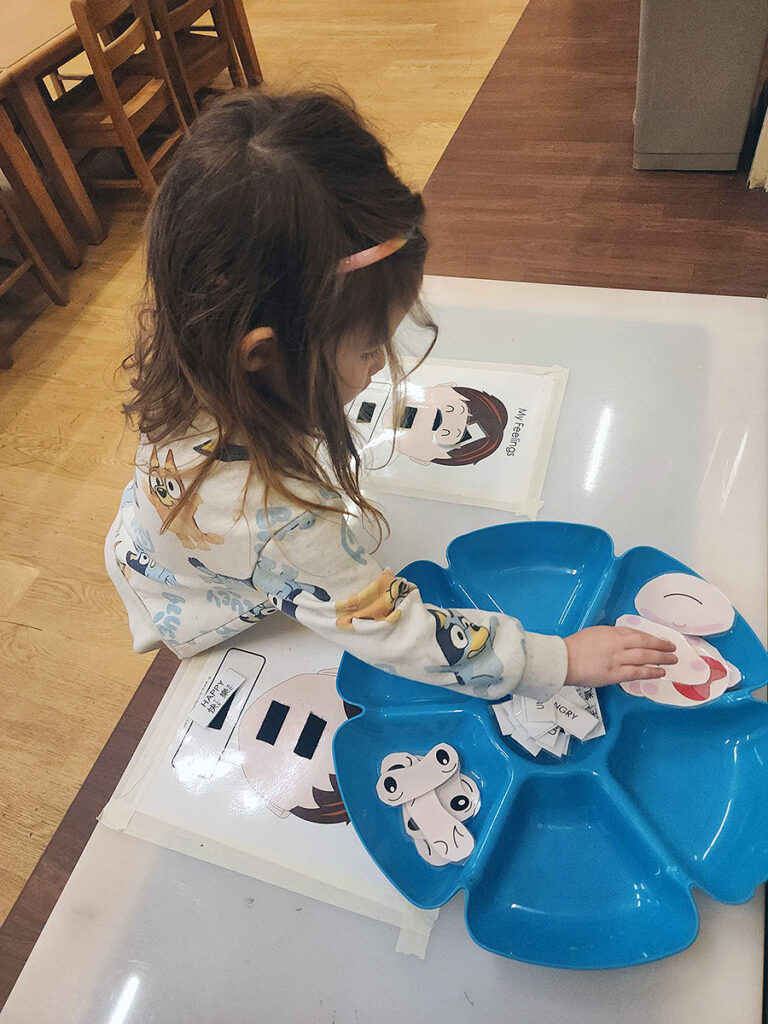
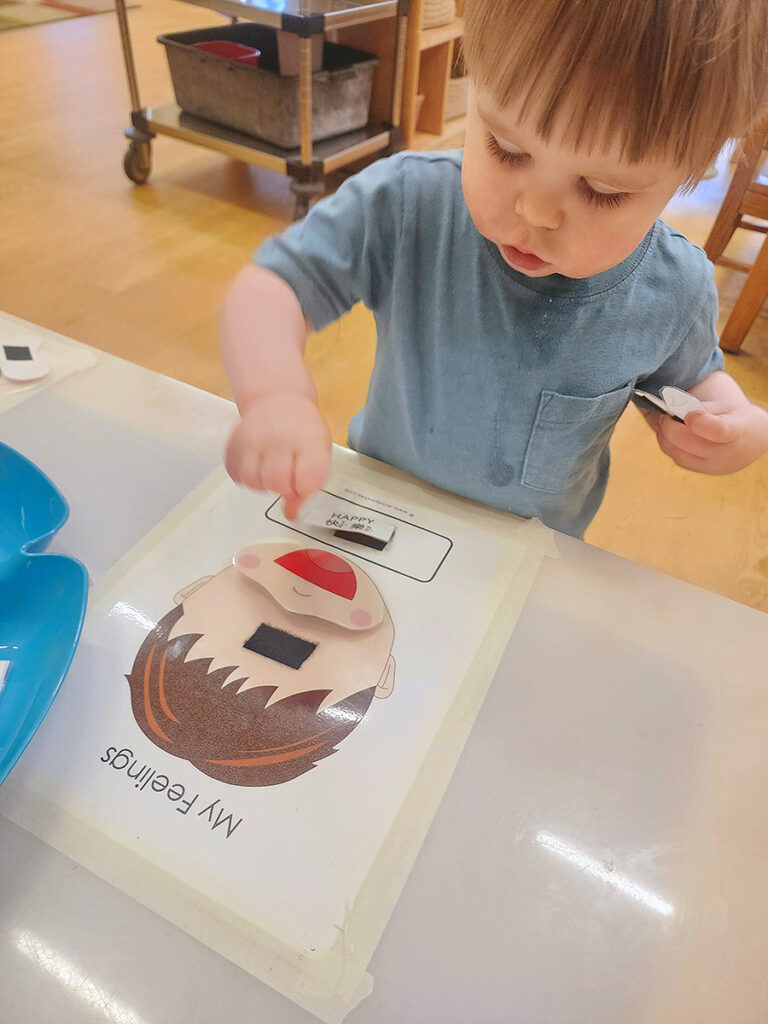
When the children began to arrive for school, they gradually noticed that breakable plastic eggs with a variety of faces, ranging from happy to sad, were littered around the classroom. It soon sparked an interesting dialogue of how appearances can clearly exhibit our feelings. They made quick work of separating the top and bottom halves, steadily realizing their opportunity to endlessly mix them and craft “new” emotions. Using the scrunched eyes of “excited” with the smirking mouth of “proud” made an “angry” egg. This activity aided in role playing scenarios through demonstrating that our demeanor may reflect what we are experiencing inside of our bodies.
Another activity included highlighting feelings through an emotion board, which highlights photographs of diverse people, young and old, experiencing a range of emotions shown through exaggerated facial expressions. This board was added to the bathroom door, along with a low mirror, so that the children could easily contextualize their emotions by making the connection that these photographed people feel just as deeply as they do. Seeing these expressive faces is paramount in distinguishing happy from sad, something that our children can then use to apply to themselves. The children are very inspired by these faces, and sometimes decide to pull a face just like the laughing gentleman while looking in the mirror. Teachers model and highlight both big and small emotions. We’ve added environmental print examining, “How Do You Feel Today?”
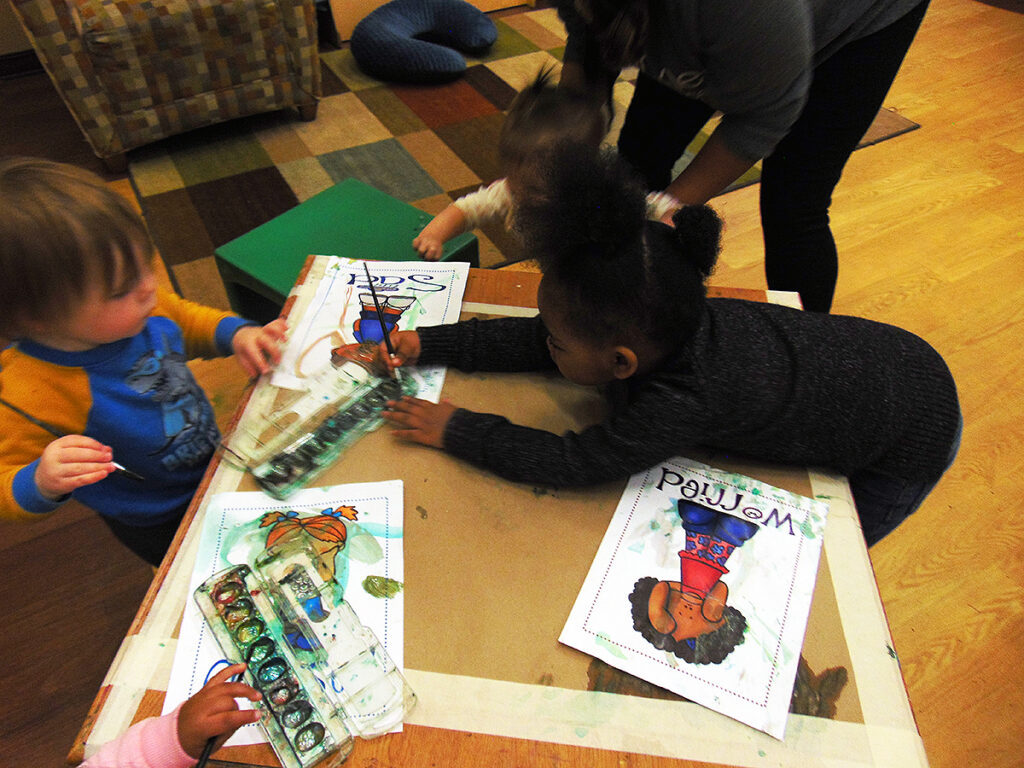
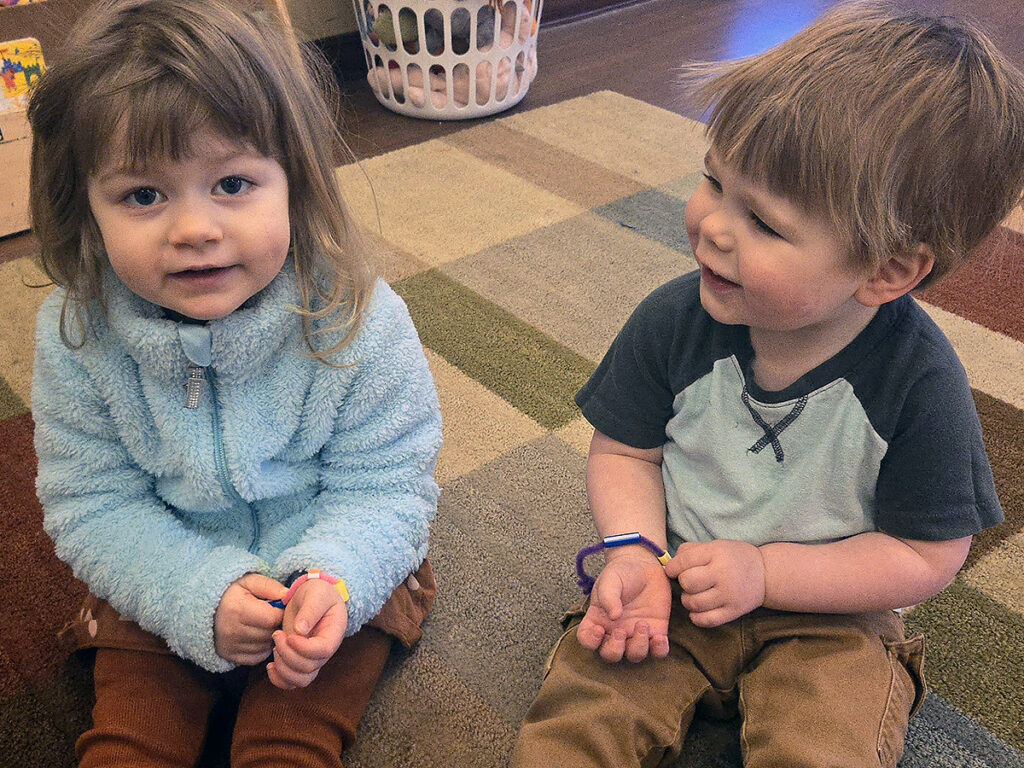
Our primary approach as a school is to model words from the school’s language glossary that is shared with every teacher, intern, college student, and parent to ensure that adults give consistent messages from classroom to classroom, and, potentially, at home. Teachers encourage children to give soft, gentle touches while checking on friends, as well as asking before we give hugs. Teachers especially highlight emotions in the moment and are keen to point out that some of our actions can affect others positively or negatively. Teachers encourage friends to ask, “What do you think would make them feel better?” While giving the child opportunities to solve problems, teachers can suggest a plan to take turns or share.
Cultivating empathy is consequential in building connections with others. These children have the profound power to shape their communities, where individuals feel heard, valued, and understood. By nurturing empathy from an early age, teachers equip the children with the lifelong skills to acknowledge how the wheel of emotions intertwine. Teachers help to clarify and promote understanding of how children feel by identifying these key feelings. The classroom is a secure environment to allow children to completely express emotions and exercise regulating them among peers who are also navigating the complexities.

